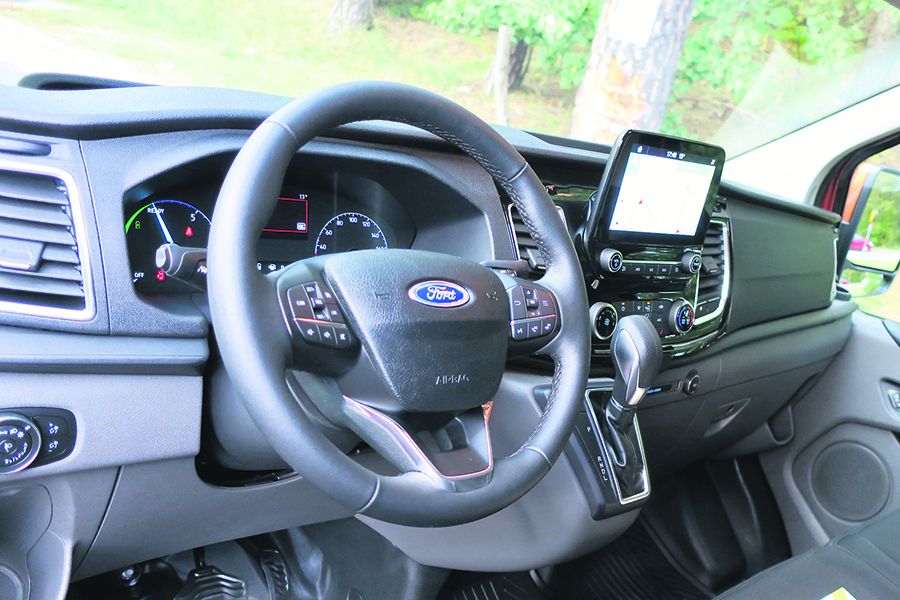Last week I got the chance to drive Ford's Transit Custom plug-in hybrid for the first time
By Brian Byrne
LAST week I got the chance to drive Ford’s Transit Custom plug-in hybrid for the first time. Available in Ireland from November, it is the first PHEV from any LCV maker in the 1-Tonne van class.
Ford’s Ireland boss Ciaran McMahon admits it will be a niche variant in a niche area, but he already has orders for ten. And he expects to sell maybe 200 units in 2020.
Against total sales of about 6,000 Ford LCVs here last year, of which some 1,600 were Transit Customs, that may not seem many.
But a start is a start. It will be interesting to see how many potential buyers of battery-electric vans might take this more flexible option.
Transit Custom is a good looker, able to hold its own aesthetically against anything in the 1-tonne marketplace. And as a mobile workplace for the operator it is right up there with the best.
There are no complaints about the economy and reliability of the diesel, so where does Ford — and its customers — want to go with an electrified one?
Well, urban delivery systems will be shifting away from diesel, and to a lesser degree, petrol.
Electric vans are growing in numbers and availability from main makers.
Ford says they’ve taken the PHEV route as a result of conversations with existing van customers, whose main concern is ‘when I go electric, will I be able to use my van the same as I do now?’
Pure battery electric vans are ideal for fixed known routes in urban areas, in operational scenarios where there is also regular off-time for charging.
The Transit Custom PHEV allows electric drive operation where necessary and useful, with the flexibility of being able to operate for a total of 500kms without need for refuelling or charging.
In load terms, there’s no trade-off between the standard diesel version and the PHEV. Volume capacity is the same, and the 1,100kg payload is similar.
That’s because the weight of the heavier diesel and the fuel tank and treatment systems that come with it are about the same as the lightweight 1.0 petrol engine and the hybrid battery.
The front wheels are driven always by electric power, with the petrol engine acting as a range extender for when the 56km battery range is used up, powering the electric generator to drive the vehicle and at the same time chargingthe battery.
Selectable drive modes can force the system to stay in EV for as long as there’s juice, or to operate with the petrol generator, only to either save the battery power until needed, or charge it while, for instance, on a between urban centres motorway drive.
In a mix of Stockholm slow commuter traffic and travel out in the Swedish countryside last week, the over-riding sense was of untiring driving. Especially the quiet absence of a diesel.

The only noise was when the petrol engine had to provide extra generating power and spun faster. The powertrain works as an automatic, with no gear changing.
But there are no free lunches in the electrification business, and the cost of the battery is the main reason why the new Transit Custom PHEV will set buyers back €46,700, or a cool 20 grand more than a similar standard Custom. You’d buy a lot of diesel for the extra.
But as more cities introduce Ultra Low Emission areas, which will penalise if not outright ban internal combustion vehicles, electrified powertrains will become more important.
The Transit Custom PHEV is one of the practical solutions.








